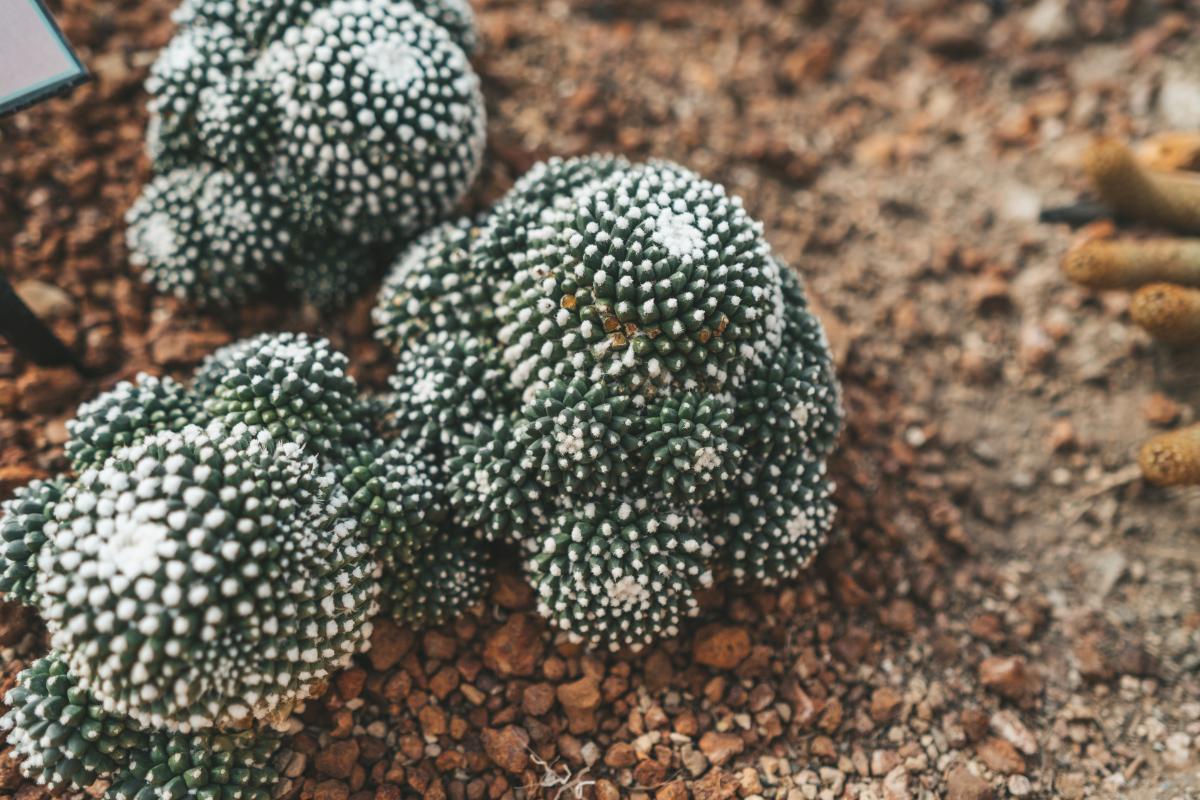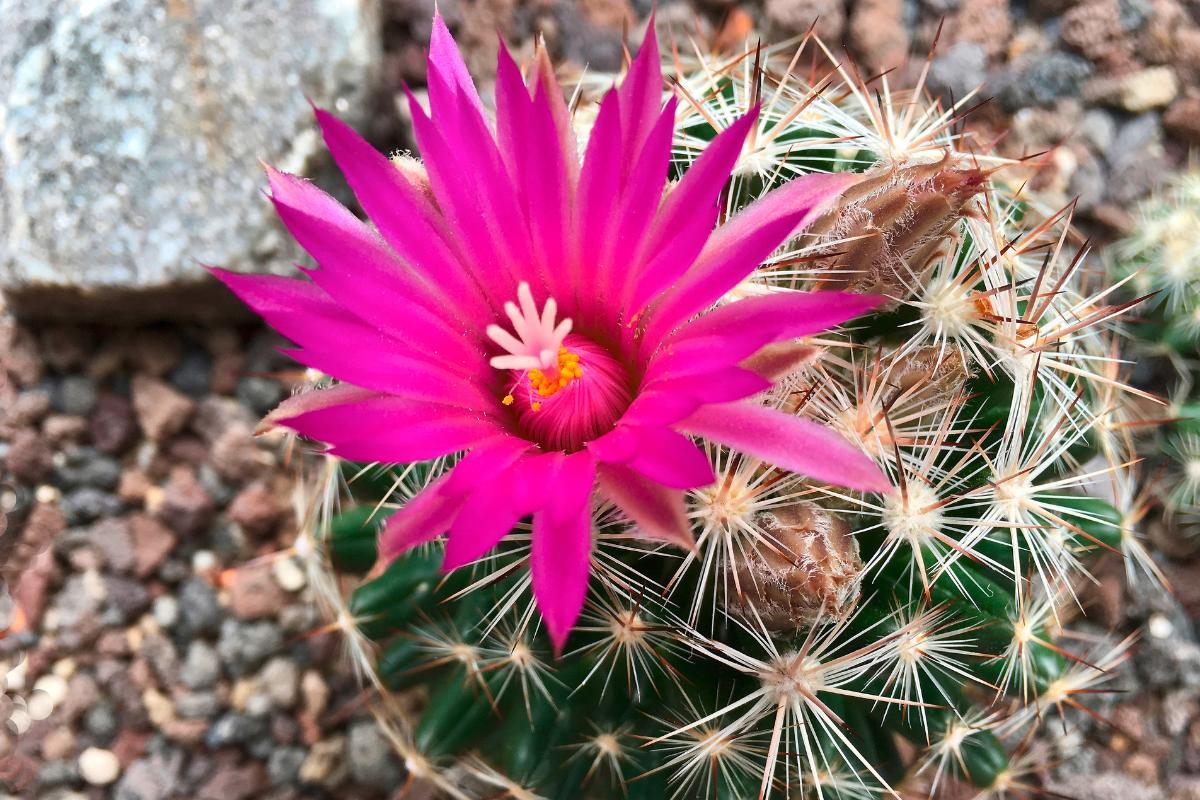Types of Small Cactus Plants for Pots


Some of the best small cacti species include Blossfeldia liliputana, peyote (Lophophora williamsii), Rebutia minuscula, Frailea castanea, pinecone cactus (Pelecyphora strobiliformis), Hester's foxtail cactus (Escobaria hesteri), Epithelantha micromeris, Sneed's pincushion cactus (Escobaria sneedii), guanaco grass (Maihuenia poeppigii) and brittle prickly pear (Opuntia fragilis).
Cacti are plants that require relatively little care. This is largely due to their ability to conserve a lot of water. Although many of them can grow to several meters in height, there are various species which will only grow to be a few inches tall. These mini cacti are especially good for indoor spaces since they can be planted in pots without taking up a lot of room. It is important to note that they will need to be placed in areas where they can receive a lot of light, even if they are indoors. Learn more with thedailyECO as we share these 10 types of small cactus plants for pots.
- Blossfeldia liliputana
- Peyote (Lophophora williamsii)
- Rebutia minuscula
- Frailea castanea
- Pinecone cactus (Pelecyphora strobiliformis)
- Hester's foxtail cactus (Escobaria hesteri)
- Epithelantha micromeris
- Sneed's pincushion cactus (Escobaria sneedii)
- Guanaco grass (Maihuenia poeppigii)
- Brittle prickly pear (Opuntia fragilis)
Blossfeldia liliputana
Although it is difficult to tell by the photo below, this mini cactus species is considered the smallest cactus in the world. The diameter is only 1-1.2 cm wide by the time they reach their full maturity. While there is no generally agreed upon common name, the taxonomic name B. liliputana refers to the Lilliputians, the tiny island people described in Jonathan Swift's 1726 novel Gulliver's Travels.
This small cactus for pots is a plant native to the Argentine and Bolivian Andes, growing on rocky heights of up to 3,500 meters above sea level. It grows colonially, with many whitish glochids. These are reduced spines, arranged in small points. The petals of the flowers are white. If you would like to have this small cactus in a pot at home, you can use our affiliate link below to purchase its seeds:

Peyote (Lophophora williamsii)
It measures from 0.8-4"/2-10 cm in diameter, but is usually about 1.6/4 cm across. The growth is very slow, so growing large specimens is difficult. It barely sticks out of the ground in a semicircle, staying almost buried and flush with the ground. It is a sacred plant in the deserts of North America, but it is in serious danger of extinction due to looting. Unfortunately, you likely cannot grow this at home as its psychoactive properties make it illegal in many countries.

Rebutia minuscula
It is shaped like a flattened disc and grows to 2.4"/6 cm in diameter. This genus is popular for its easy care and excellent flowering. If you are looking for a small flowering cactus this is the option. At 2 years of age they produce striking red flowers that develop for several weeks to be enjoyed in spring and summer. It is native to the Argentine mountains, so it needs changes between hot and cool. Constant heat can be detrimental to its growth.
If you are interested in learning more about these types of plant, our related article will help you know the difference between succulents and cacti.

Frailea castanea
It measures from 1-3 cm, but develops very large and showy yellow flowers 2 to 3 cm in length. It has many divisions in the form of geometric tubercles that are stacked on top of each other. The color of the stem usually has a purple tint to it.

Pinecone cactus (Pelecyphora strobiliformis)
It measures 1.5-2.3"/4-6 cm in diameter in its globular form, a size that it takes a long time to reach because it grows so slowly. As you can see in the photo below, this small cactus species has characteristic wart-like bumps closely packed together. It is native to the northern Mexican desert. It is in danger of disappearing in its natural environment, but can be obtained from nurseries where it is propagated responsibly without illegal removal.

Hester's foxtail cactus (Escobaria hesteri)
This small cactus plant for pots has a bowl shape and measures 1.1-1.9"/3-5 cm in length. Each individual cactus is mall, but they have the capacity to form colonies of several mini cacti spreading over a wide area. It has spaced tubercles with spines around a center. In summer it produces bright pink flowers with a yellow center as shown in the photo below. It can withstand temperatures below zero, making it ideal for temperate climates.
Discover the different types of cactus without spines in our related article.

Epithelantha micromeris
E. micromeris measures 2.3"/6 cm in diameter. It is globular and emerges in a hemisphere from the ground. As it grows it can lengthen into a barrel shape. It is a sacred plant of the Tarahumaras of the northern deserts of Mexico, being very important as a protector plant. Its alkaloid content also has it use in traditional rituals.
It has short spines that densely cover the stem and are geometrically arranged from the areoles. This sometimes makes it appear completely white. It produces small pink flowers which are considered the smallest of all cacti. From these flowers, a cylindrical red fruit is produced. This fruit is edible, but it is not very tasty. It is much better to leave it on the cactus for aesthetic purposes.

Sneed's pincushion cactus (Escobaria sneedii)
Each individual measures from 1 to 3 cm in diameter, but they form compact, branched colonies as depicted in the photo. It can grow up to 12"/30 cm tall, but is almost always at ground level with the rest buried below the soil. The spines are long and white. The flowers can present in shades ranging from pink to purple.
This type of tiny cactus plant for pots withstands temperatures as low as -12 ºC/10.4 ºF. It is at risk of disappearing due to the extraction of specimens for trade. This is because is in high demand among collectors due to its small size. Although rare, you can use the affiliate link below to purchase the seeds of the Sneed's pincushion cactus (subject to availability):

Guanaco grass (Maihuenia poeppigii)
It is a small cactus plant in terms of height, but it spreads out a lot, forming dense plant coverings. It has very long spines that give the cactus a mainly white color. It produces very showy yellow flowers in late spring. It is native to South America and are named after guanacos, the wild ungulate animal that is related to alpacas and llamas.

Brittle prickly pear (Opuntia fragilis)
It is of the same genus as the type of edible cacti known as prickly pear (called nopales in Spanish), but this species does not reach more than 10 cm in height. If you like prickly pear cactus, but don't have much space, this is a very good option. It can form colonies of several individuals. As a miniature prickly pear, it has prickly glochid stalks, as shown in the photo. The most striking feature are its multi-petaled, bowl-shaped flowers that come in colors such as pink, yellow or orange. Even the one plant can have a range of colors. It is cold resistant down to -25 ºC/-13 ºF.

If you want to read similar articles to Types of Small Cactus Plants for Pots, we recommend you visit our Indoor plants category.
- Uhlig, M. (2008). Cacti and other succulents . Spain: Editorial Hispano Europea, SA















